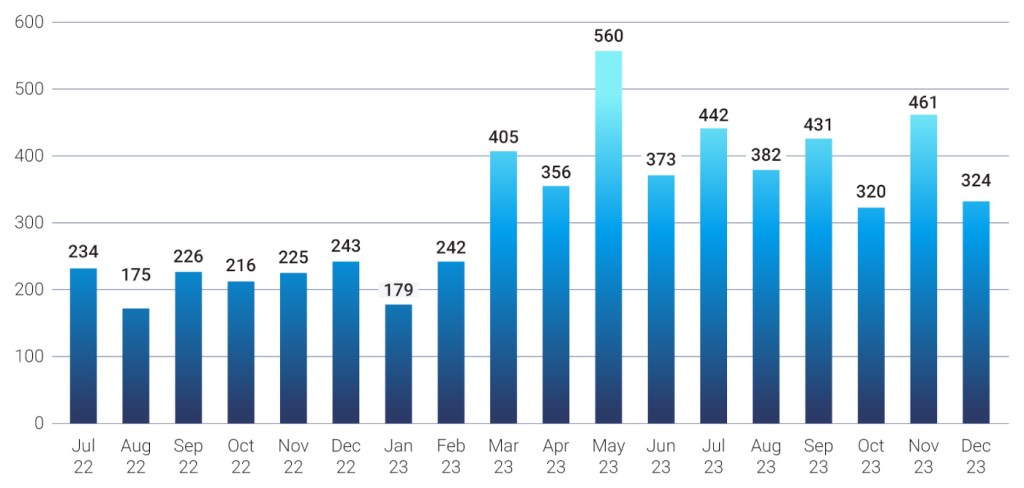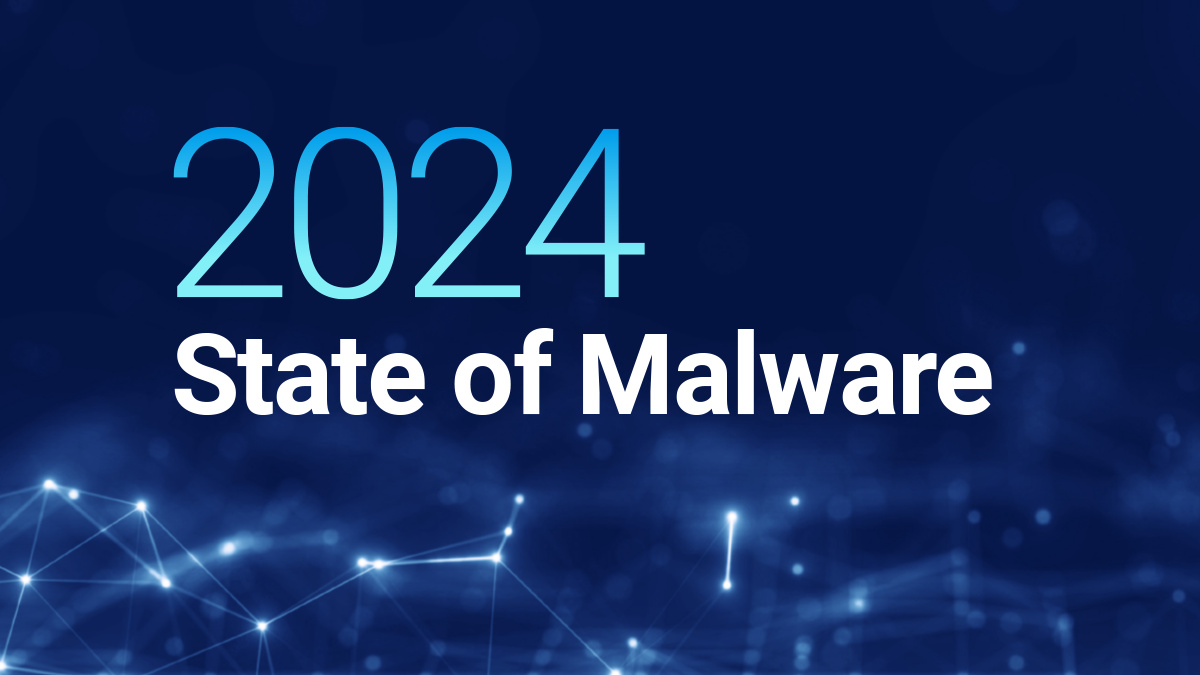In 2023, the CL0P ransomware gang broke the scalability barrier and shook the security world with a series of short, automated campaigns, hitting hundreds of unsuspecting targets simultaneously with attacks based on zero-day exploits. The gang’s novel approach challenged a bottleneck that makes it hard to scale ransomware attacks, and other gangs may try to replicate its approach in 2024.
Big game ransomware attacks are devastating but relatively rare compared to other forms of cyberattack. There were about 4,500 known ransomware attacks in 2023, although the true figure is probably twice that. These attacks extorted more than $1 billion in ransoms in 2023, according to blockchain data platform Chainalysis.
The potential riches are enormous and there’s no other form of cybercrime that’s so lucrative, so why aren’t we seeing more attacks? It doesn’t seem to be a lack of targets, in fact the evidence suggests that the gangs are picky about who they attack. The most likely reason is that each attack takes a lot of work. Broadly speaking, an attack requires a team of people that: Breaks in to an internet-connected computer, researches the target to see if they’re worth the effort of an attack, explores their network, elevates their privileges until they’re an all-conquering administrator, steals and stores terabytes of data, attacks security software and backups, positions ransomware, runs it, and then conducts negotiations.
Doing all of this efficiently requires people, tools, infrastructure, expertise, and experience, and that seems to make it a difficult business model to scale up. The number of known ransomware attacks a year is increasing steadily, by tens of percentage points rather than exploding by thousands. This suggests that most of the people who are drawn to this life of crime are probably already doing it, and there isn’t a vast pool of untapped criminal talent waiting in the wings.

Before 2023, cybercrime’s best answer to this scalability problem was Ransomware-as-a-Service (RaaS), which splits the work between vendors that provide the malware and infrastructure, and affiliates that carry out the attacks.
CL0P found another way. It weaponised zero-day vulnerabilities in file transfer software, notably GoAnywhere MFT and MOVEit Transfer, and created automated attacks that plundered data from them. Hundreds of unsuspecting victims were attacked in a pair of short, sharp campaigns lasting a few days, leaving Cl0P as the third most active gang of the year, beating ransomware groups that were active in every month of 2023.
It remains to be seen if other gangs can or will follow CL0P’s lead. The repeated use of zero-days signaled a new level of sophistication for a ransomware gang and it may take a while for its rivals to catch up. However, the likes of LockBit—the most prolific group of them all—don’t want for resources so this is probably a matter of time and will, rather than a fundamental barrier.
There is also a question mark about how successful the attacks were. While automation allowed CL0P to increase its reach, it’s reported that a much lower percentage of victims paid a ransom than normal. However, ransomware incident response firm Coveware believes the group managed to compensate by demanding higher ransoms, earning the gang as much as $100 million.
Because of CL0P’s actions, the shape of ransomware in 2024 is in flux and organisations need to be ready. To learn more about how big game ransomware is evolving, the threat of zero-day ransomware, and how to protect against them, read our 2024 State of Malware report.










